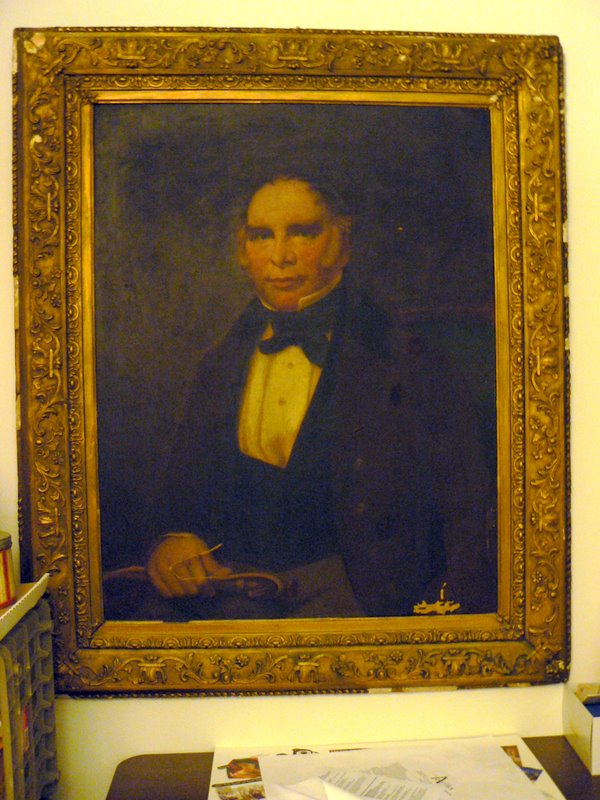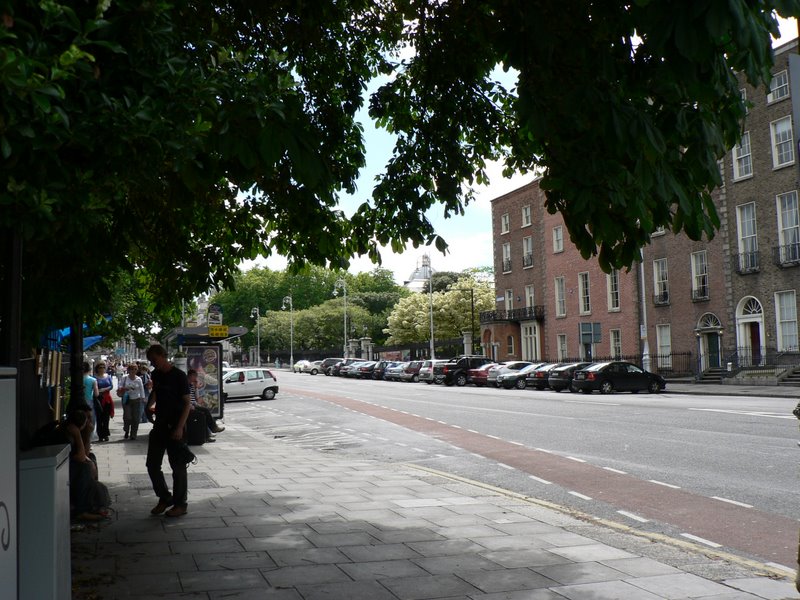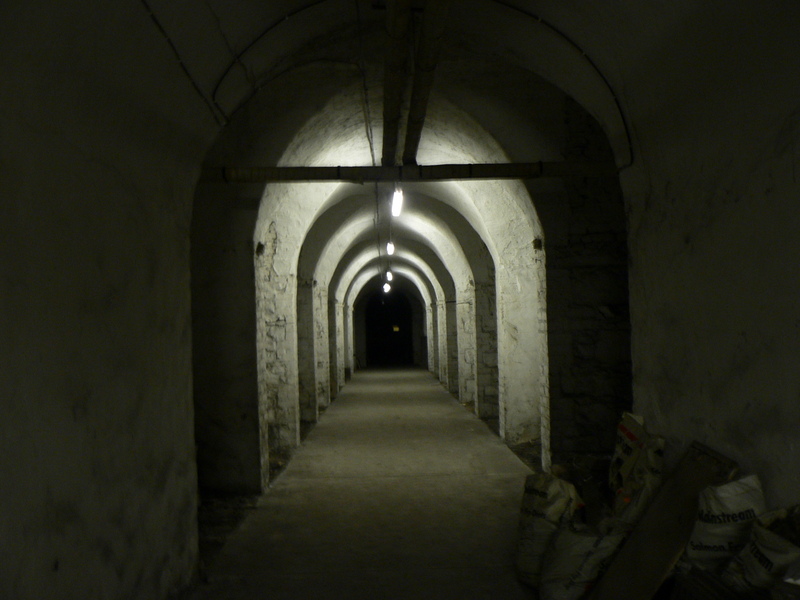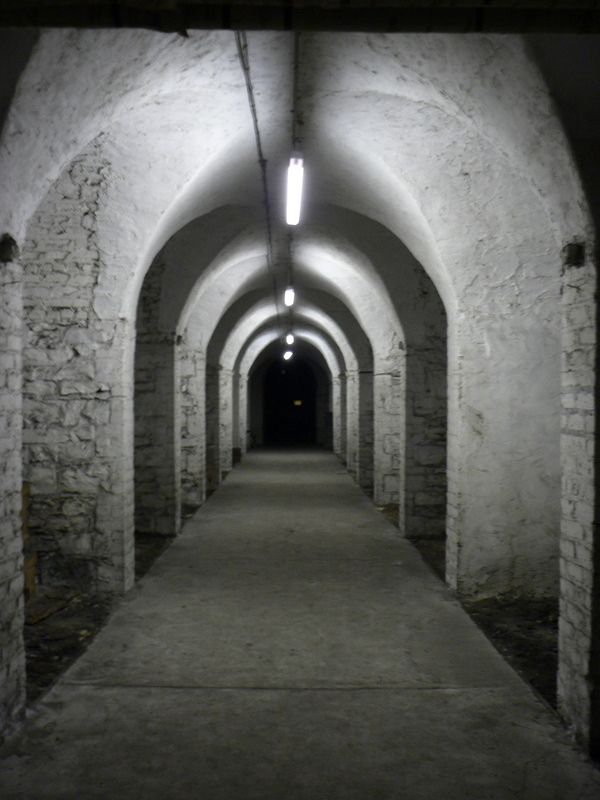 "Murphy"
"Murphy"
FitzGerald
I haven't made a concerted effort to research the FitzGerald branch of the family, but have always made a note of anything I came across - names or places - that I knew were relevant to their story. Sometimes my curiosity got me and I'd spend some time persuing a line of thought that led from a stumbled upon clue. And when once in a while something seemed to be perversely obscure I might have gone after it with a bit more gusto.
I ended up with an interesting little collection of stuff, which after a while like bits of unsorted thread abandoned in the bottom of a workbox was threatening to get lost in an absolute tangle. So I decided to get it sorted out so as not to go backwards at least. Someone else might want to take up the quest and might as well start from where I left off rather than back where I started anyway.

Dublin, at Merrion Square
I already had some good stuff before I started. Best of all was Granddad's own stories about some of the people, and the places they frequented. And also a handful of copies of civil registrations - three funerals and a wedding as it happens - that our father and Kate Robinson had managed to track down between them. Not always easy, in Ireland, as so many of the records there have been destroyed, and civil registration didn't begin properly until 1864. Protestant parish records for the most part went up with the great fire in 1922, and Catholic church records are a bit patchy anyway because of the wretched penal laws. Census records were systematically disposed of. So information can be hard to come by.
The absolute best breakthrough came when I was in Dublin after a session at the library researching Costello, and found I had a couple of hours to kill before getting the train on my way back home. I looked at my map and decided to go and have a look at the church I knew my Granddad's grandparents had been buried at. My map said it was now a Viking Centre, but what I actually found was mind-blowing. They were digging out the crypt.
In shock I stood and stared at the mess, one hand clutching my overnight bag on wheels and the other stifling a gasp. A hard-hatted work guy came and said hello and would I like to see inside. I did. As my eyes got used to the dimness a red brick wall appeared, going up two stories and with empty niches in it, and below a sea of mud with nooks and crannies all over it. It's going to be a theatre, the guy said. I didn't have a hard hat and visitors weren't really allowed anyway, so it was a brief visit. Out in the sunshine again the guy asked me if I'd had anyone buried there. I did I said. And where are they now? He turned and looked down the road. He said that he didn't know but he pointed out a small white van parked a ways down the road. He said that was the van that had carted them all away, a few at a time. If I could get there before it drove off again I could ask the driver where he took them.
Clutching my wheels in one hand and holding my shoulder bag down with the other I ran for my life down the road, and caught him just slamming his doors shut. "Saint Andrews Westland Row" he called out and I looked at my watch. No time. I had a ferry to catch.
It was the church most of our FitzGeralds had been baptised and married in. I wrote to the church and they sent me a list of FitzGeralds that had been put in their crypt. There was Edward the engraver (d.1834 age 76), our Granddad's grandparents George and Marcella, then Edward (d. 1867 age 71), then George and Marcella's children Edward, Charles, William and Henry.
Some time later James and I rented a car and went to visit the Costello mansion in the West of Ireland. On the way back we decided to see if a trip down the crypt was at all possible. The woman at the office window in the foyer of the church said no it wasn't possible, one had to make an appointment first with a person that wasn't available at the time and once again we did have a ferry to catch. But a guy rattling a bunch of keys on his belt appeared behind us, overhearing the conversation. You don't have to come all this way and not see your family he said, and took us down.

Crypt, St Andrew's Parish Church
I posted the story in Google Plus with "Oh me, oh my, oh my beating heart."
The crypt was well kept but the lighting was a bit eerie and there were odd coffins set down here and there and "That one's decided to try and escape" our guide said, as we passed one with a hip-bone showing through a hole.
And then, at the very end of a passage, gates appeared, and in there he said were our people.

Crypt, St Andrew's Parish Church
There were just two families in the compartment, both removed from the same church. We peered through the bars of the gate and could see the shapes of the coffins.
And so we got taken a generation further back than we'd managed before. Great great great grandfather Edward FitzGerald.
The story didn't end there. Some time quite a lot later (September 2011) James and I were on a train on our way to Ireland yet again, when a stranger came and sat in the seat opposite us. He said it wasn't the seat he had reserved but someone else had taken that. We said the exact same thing had happened to us. And it turned out this guy was part of Smock Alley Theatre which was what was being built on the site of Sts Micheal and John's. (Actually the church had originally been built on the site of the very old Smock Alley Theatre (https://smockalley.com/).
Anyway, he said he was on his way because he was working with a new play called "Do You Read Me?" that was being produced there.
We said we had ancenstors that had been buried there. And he gave us a card and said we should go see the play. Which we did. It was about ancestors and ghosts and featured the same brick wall I had seen, with actors appearing and disappearing in the nooks and crannies, with lighting about as spooky as you could get. It was an amazing good play and we loved the whole experience. But you sometimes sure get the feeling the ancestors are pulling a few strings up wherever they are.